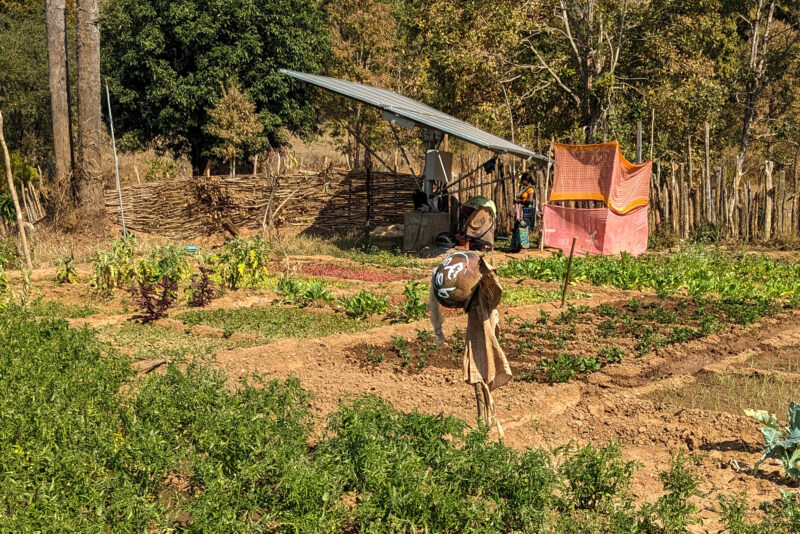10 Key Findings from TCI’s Report on Ending Hunger in India

TCI’s latest report, Food, Agriculture, and Nutrition in India 2020: Leveraging Agriculture to Achieve Zero Hunger (FAN 2020), focuses on the extent of hunger and malnutrition in India in the context of Sustainable Development Goal 2 (SDG2), which calls for zero hunger and an end to malnutrition by 2030. Using district-level maps and data, the report lays bare the stark spatial differences in hunger and malnutrition in India and highlights potential ways the country can move forward toward those goals.
In recent decades, India has made progress in reducing hunger, at least in terms of calories consumed. However, micronutrient malnutrition is endemic, as evidenced by high rates of stunting, especially among the country’s impoverished people. At the same time, rates of obesity are increasing. The report argues that reducing both forms of malnutrition requires better access and availability of diverse, nutrient-rich foods. It calls for a reorientation of agricultural policy away from staple grains like rice and wheat, focusing instead on nutritious coarse grains, pulses, fruits, vegetables, and livestock products.
FAN 2020’s authors, Kiera Crowley and Andaleeb Rahman, offer 10 key findings from the report:
- India’s progress on undernutrition has been slow compared to economic progress. India has made significant progress in reducing poverty, but as of 2016-18, 14.5 percent of the population—194 million people—were still undernourished.
- Getting the nutrition metric right is essential to getting the policy right. Undernourishment, which is based on calorie adequacy, does not account for the quality of diets. People consuming enough calories may still suffer from symptoms of malnutrition if their food is deficient in micronutrients. Anthropometric measures give a more accurate picture.
- Access to nutritious food is lagging, despite increasing demand. Expenditures on fruits and vegetables, milk products, meat, eggs, and fish have increased, demonstrating increased demand for nutritious foods. However, because prices for these foods are high and frequently fluctuate, households are instead eating more processed foods, beverages, oils, and fats. Policies should encourage increased production of nutritious foods in order to make them more affordable.
- Regional disparities in nutritional outcomes can be attributed to varying trajectories of subnational structural transformation. Symptoms of malnutrition vary widely between and within states and are linked to structural shifts in states’ economies from agriculture to industry and service sectors. In agriculture-led growth states and urbanizing states, the rate of stunted, wasted, and underweight children is lower, compared to lagging states, but the rates of obesity and associated non-communicable diseases are higher.
- Investing in agriculture in the lagging states is fundamental to reducing malnutrition. Investing in agriculture can kickstart the process of structural transformation in lagging states. As states move through the process, the share of agriculture in GDP and the share of the population involved in agriculture decreases, allowing agricultural incomes to increase. In states where the share of the population working in agriculture does not decrease fast enough, continued investment is needed.
- Investment in agriculture leads to better nutrition at the household level via higher incomes, access to diverse foods, more equitable intrahousehold food allocation, and improved health environments. Increased agricultural productivity leads to higher incomes, which is known to improve nutrition. Likewise, it increases access to diverse foods through both rising incomes and increased access. Directing agricultural investments toward self-help groups increases women’s empowerment, which improves household food allocation. Investments in food safety, sanitation, and hygiene help to ensure the ability to absorb nutrients.
- In regions where agriculture is underdeveloped and poverty is high, diets are mainly staple-based, and nutrition outcomes are poor. Due to unfavorable climate, poor infrastructure, and a lack of economic incentives, agricultural development has lagged behind in eastern India. Diets in the region are composed mostly of staple grains, resulting in a prevalence of stunting.
- In more developed regions, diets and nutrition outcomes have improved, but overnutrition is emerging as an important concern. Cereals are less prominent in diets in agriculture-led growth and urbanizing states. However, consumption of fruits and vegetables continues to be low, and people eat more processed foods, contributing to a rise in obesity and noncommunicable diseases.
- Achieving SDG2 requires policy focus to move toward more nutritious and micronutrient-rich foods, such as pulses, coarse cereals, vegetables, fruits, and animal products. While demand for more nutritious foods increases, government policies continue to focus on staple grains, contributing to rising nonstaple prices. Meeting the rising demand for micronutrient-rich foods can move the country closer to nutrition security while providing economic opportunities for smallholder farmers. Support for these farmers—in the form of market infrastructure, supply chain development, and improved institutional arrangements—is crucial for agricultural diversification.
- Efforts to double incomes and productivity need to be tailored to various different cropping systems in the country. India has a vast array of cropping systems, each of which requires different interventions to increase productivity. For example, in systems where land lays fallow for part of the year, introducing a new crop can increase production. Future research on improving productivity and incomes should focus on further tailoring strategies to different cropping systems.
Read the full FAN 2020 report (PDF)





